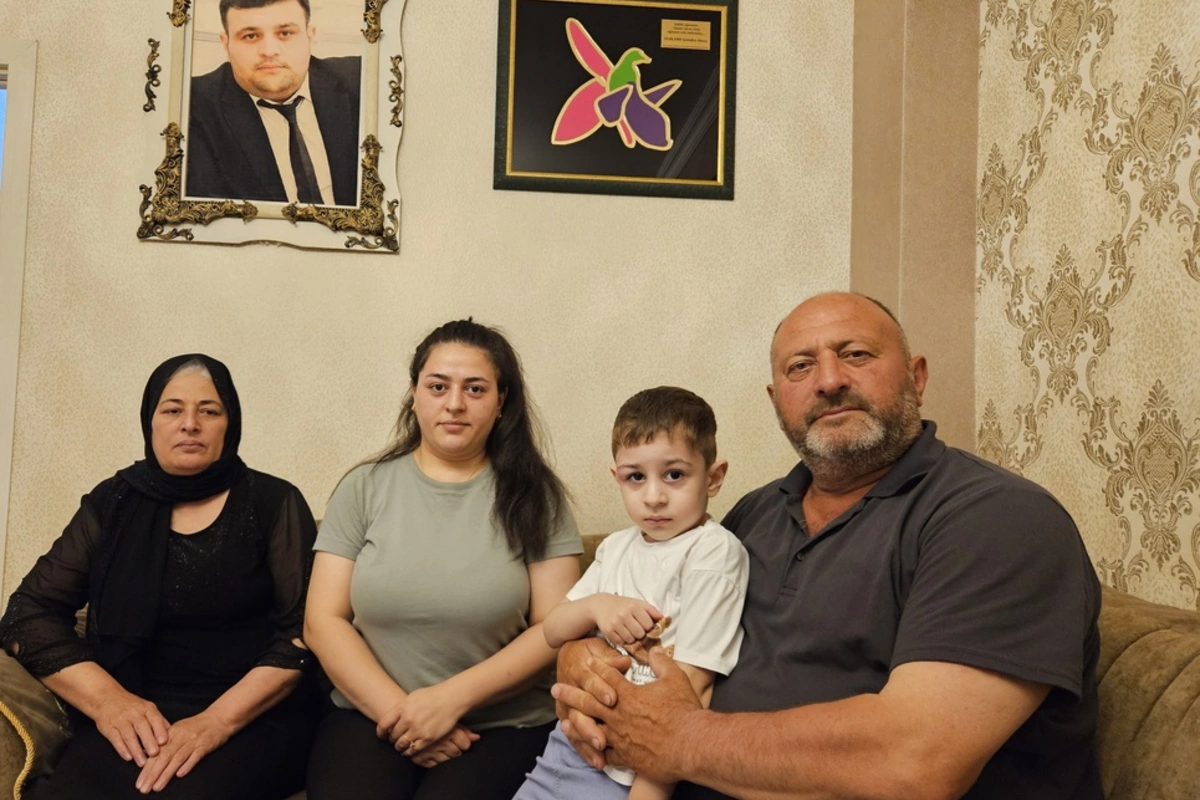
The Abishov family is among the many Azerbaijani families who have suffered the loss of their loved ones to landmines. As more lives are claimed by landmines planted due to the occupation of Azerbaijani lands, urgent international support is essential to address this ongoing problem.
Abishovs family
Text and photos by Konul Shahin
"Don't worry about me; protect each other." These were the last words Siraj Abishov sent to his mother, Azada. Tragically, he never got the chance to read her reply.
On June 4, 2021, Siraj Abishov, an operator for Azerbaijan Television, and his friend, Maharram Ibrahimov, a reporter for the Azerbaijan State News Agency, lost their lives when their vehicle hit a mine while they were on assignment in the Kalbajar district, recently liberated from Armenian occupation.
The conflict between Azerbaijan and Armenia, which began in the early 1990s, resulted in thousands of deaths and displaced hundreds of thousands. The war and the subsequent occupation left not only devastated and plundered villages and cities but also hundreds of thousands landmines planted in Azerbaijani territories during the years of occupation.
According to initial estimates, approximately 12 percent of the country's territory is contaminated with 1.5 million mines and an unknown number of unexploded ordnances.
Since the first Karabakh war, over 3,440 Azerbaijani citizens have suffered from mines, including 358 children and 38 women. Following the end of the Second Karabakh War, 361 more people have been affected by mine explosions, with 68 Azerbaijani citizens tragically losing their lives.

Azada Abishova, Siraj Abishov’s mother
"I would wake up every morning around 4 or 5 o'clock and write my prayers to him, so that he could start his day with them as soon as he picked up his phone," says Azada, Siraj Aishov's mother.
The Abishov family was originally from the Dondarli village in the Gubadli district of Azerbaijan. When Armenian armed forces occupied Gubadli in 1993, the family was forced to leave their home and village. At that time, Siraj Abishov was only four years old.
The liberation of Gubadli in 2020 brought immense joy to the Abishov family. Siraj, who traveled to the liberated regions for work, initially faced challenges in finding their home in Gubadli.

All that remained of the village were scattered houses and destroyed gardens. Siraj's mother, Azada Abishova, recalls that he faced the risk of mines several times while working in the liberated districts.
The family remembers with tears the day they received the tragic news.
"It was noon. I took my grandson to the park and noticed how my neighbours looked at me, but nobody said anything. When I returned home, his mother took my grandson to his room to put him to bed, and suddenly I heard her screaming. She had read the news on the Internet," says Azada Abishova.
Siraj's wife, Seyran, struggles to talk about the tragedy. When he passed away, they had only been married for two years, and their son, Ozgur, was just 1 year old.
"We wanted to name our child Onur, but at the last minute, we decided on Ozgur. His father wanted him to grow up free," says Seyran.
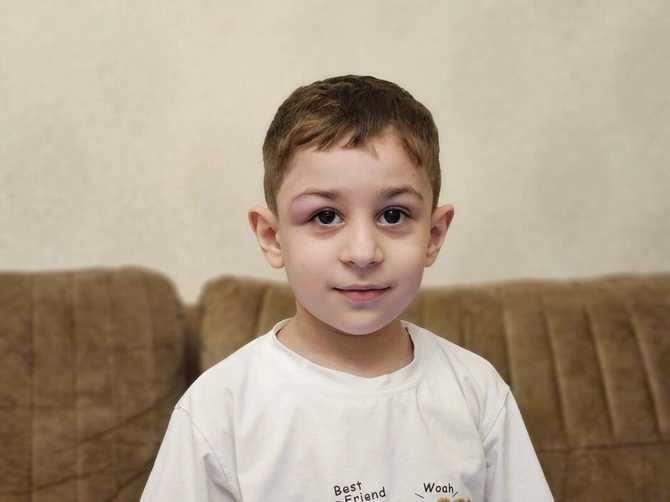
Ozgur Abishov, Siraj Abishov’s 4 year old son
For 4-year-old Ozgur, whose name means "freedom," his father is present only in photographs. He plays with his toys and looks at his father's photos, unaware of the pain his family is enduring. The last photo Siraj took before going to Kalbajar was one of him with his son, Ozgur.
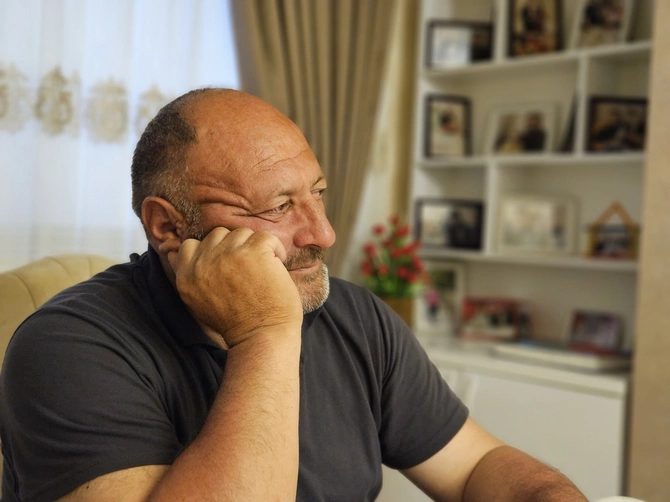
Abish Abishov, Siraj Abishov’s father
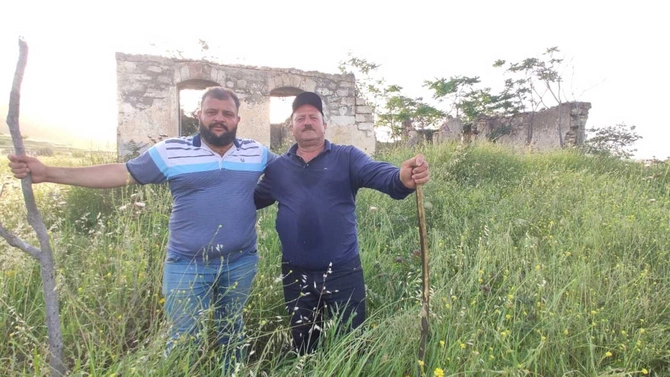
Photo by Abishov family: Siraj and his father Abish in front of their destroyed house in Gubadlı , days before his tragic death
Siraj’s father, Abish Abishov, listens to his son's voice messages and recalls their visit to their village after it was liberated.
"After 30 years, when I found my mother's and father's graves, they were scattered. Seeing how upset I was, Siraj said, 'Dad, don't worry, I will have the tombstones made.'"- recalls Abish Abishov.
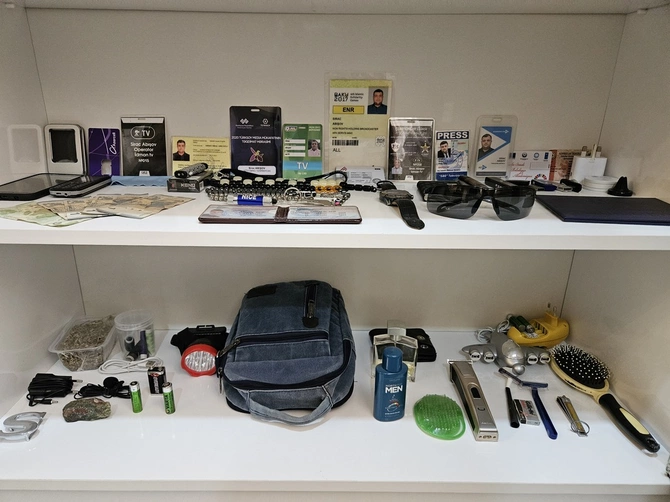
Siraj Abishov’s belongings found in this bag after his death
Azada Abishova , Siraj's mother shows me his belongings found in his bag. These belongings, delivered to the family following his passing, hold deep significance. Among them lies a stone he took from the garden of their Gubadlı home, alongside a bundle of thyme. Siraj gathered thyme for his mother, knowing her fondness for it. Now, Azada Abishova protects these items alongside other belongings of her son. Despite three years passing since the tragedy, the family's pain remains as acute as ever.
"Siraj lost his life, and our lives have changed too. I pray that no mother should experience the pain of losing her child, no mother should sacrifice her child to a mine," says Azada Abishova.
The story of the Abishov family echoes the story of hundreds of Azerbaijani families who suffered similar losses due to landmines. Almost every week, more Azerbaijanis become victims of mines, a legacy of the occupation.
Survivors often lose body parts and face lifelong disabilities. This makes adjusting to their new life difficult, leading to depression and sometimes causing them to live in isolation from society.
Landmines not only hinder the return of Azerbaijanis forced to flee their homes during the 30-year occupation but also present significant obstacles to the economic growth of liberated regions.
The transformation of Azerbaijani territories into minefields causes serious environmental damages too.
Landmines and unexploded ordnances make land and other natural resources inaccessible and overexploit what is available, leading to soil degradation. Moreover, they negatively affect biodiversity through unplanned explosions or chemical leakage into the soil and water.
Although Azerbaijan demanded mine maps from Armenia after the 2020 war, Armenian officials first denied having such maps. Then they agreed to exchange some of them for Armenian soldiers detained in Azerbaijan, saying they had them. Government sources say that the maps Azerbaijan received cover only 5 percent of the areas liberated from occupation, and only 25 percent of these maps are accurate.
To date, the Azerbaijan National Agency for Mine Action (ANAMA) has cleared nearly 140,000 hectares of land, removing 119,946 mines and unexploded ordnance. According to data from the Azerbaijani government, international experts project that it will take nearly 30 years and require an investment of $25 billion to fully address demining-related issues in Azerbaijan.
These numbers pose a major challenge for Azerbaijan, which is already grappling with the monumental task of rebuilding hundreds of villages destroyed by three decades of occupation and reviving major cities critical to the country's economy. Azerbaijan urgently needs both technical expertise and material assistance from the international community to effectively clear mines, address their consequences, and protect society from the ongoing threat landmines pose.
Share on social media
The Abishov family is among the many Azerbaijani families who have suffered the loss of their loved ones to landmines. As more lives are claimed by landmines planted due to the occupation of Azerbaijani lands, urgent international support is essential to address this ongoing problem.